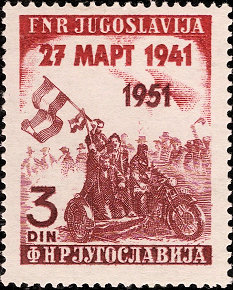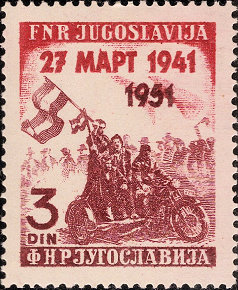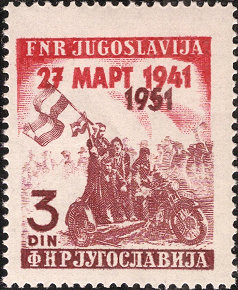Uprising in Serbia and the Yugoslav stamp
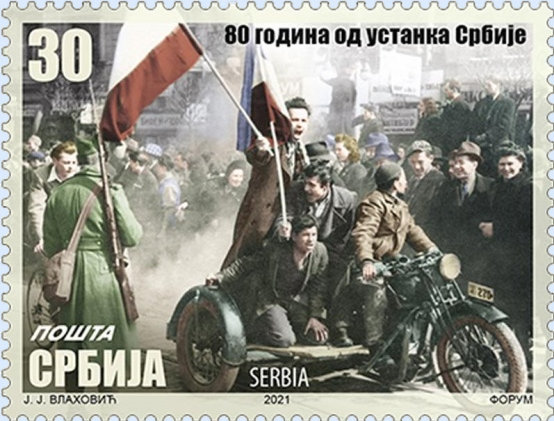
On July 7 2021 Serbia issued the above stamp. That was to celebrate the 80th anniversary of the Serbian uprising, which took place in July 1941.
The history:
On March 25 1941 the Yugoslav government made a pact with the fascist Germans. In this way the government tried to avoid war with the Germans. However, the Yugoslav people strongly disagreed with this pact and the government was overthrown. On March 27, a new government was installed and signed a deal with Russia to help them. Hitler was obviously not happy with this agreement, and on April 12 the Germans invaded Zenum (now Belgrade). Almost immediately, a group of Yugoslavs organized a communist partisan movement with the help of the Russians. This was led by, among others, Josip Broz Tito, Marshal and later President.
After Germany's invasion of Russia, the Russians left the Partisans to fend for themselves. Before long, the Germans took power in Yugoslavia and formed a new government that immediately began to murder and deport Jews, Roma and other groups. The population, seeing this, organized in July a nationwide uprising, together with the communist partisans, which was however bloodily put down.
The issue of the commemorative stamp of that uprising was initiated by the Associations of Veterans of the National Liberation Wars of Serbia and the Ministry of Labour, Employment, Veterans and Social Affairs. In 2021, under the auspices of the President of the Republic of Serbia, they organized numerous activities on the occasion of the 80th anniversary of the beginning of the uprising of the people of Serbia against fascism and the fascist occupier. The First Day of Issue was July 7 2021.
The photo used for the stamp is a colorized black and white image, made from a film about the uprising of March 27 1941.
The same image was previously used for the Yugoslavia stamp of March 27 1951. It shows a just different fragment from the film.
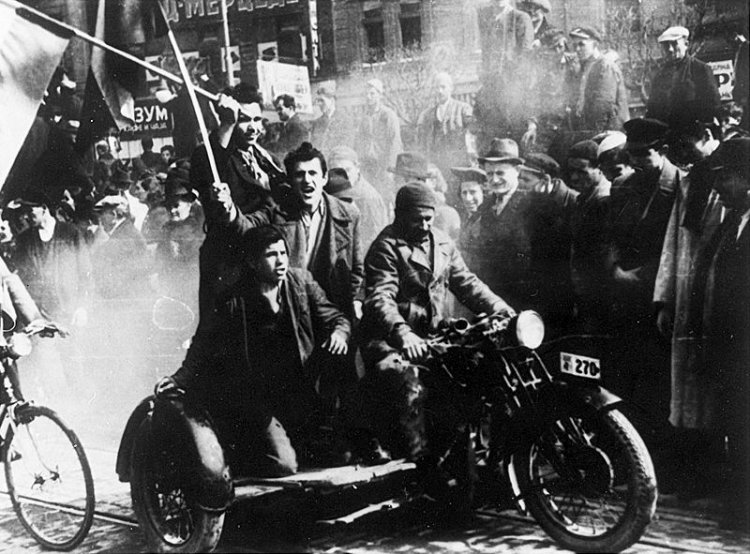
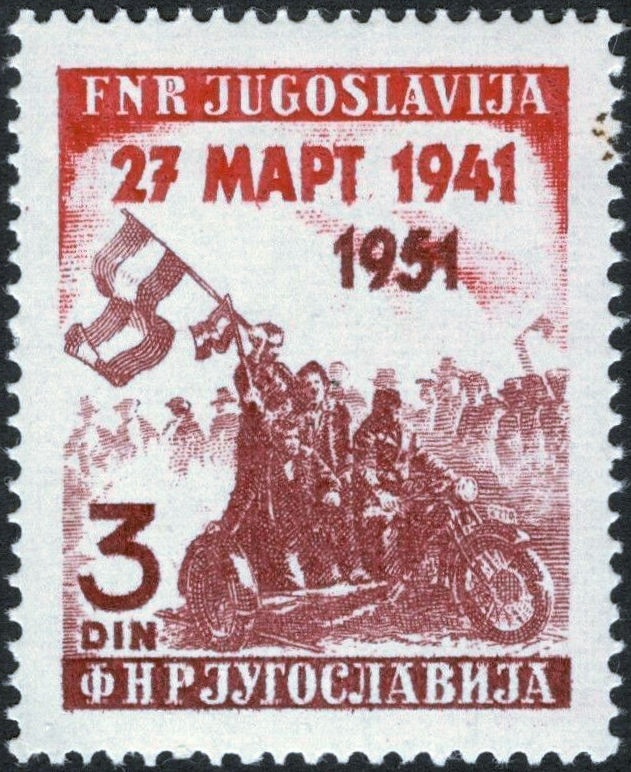
The 2021 stamp is contained in a sheet with ten identical stamps, in 2 strips of five. Between the 2 strips are five vignette stamps, with four images of paintings related to the war.
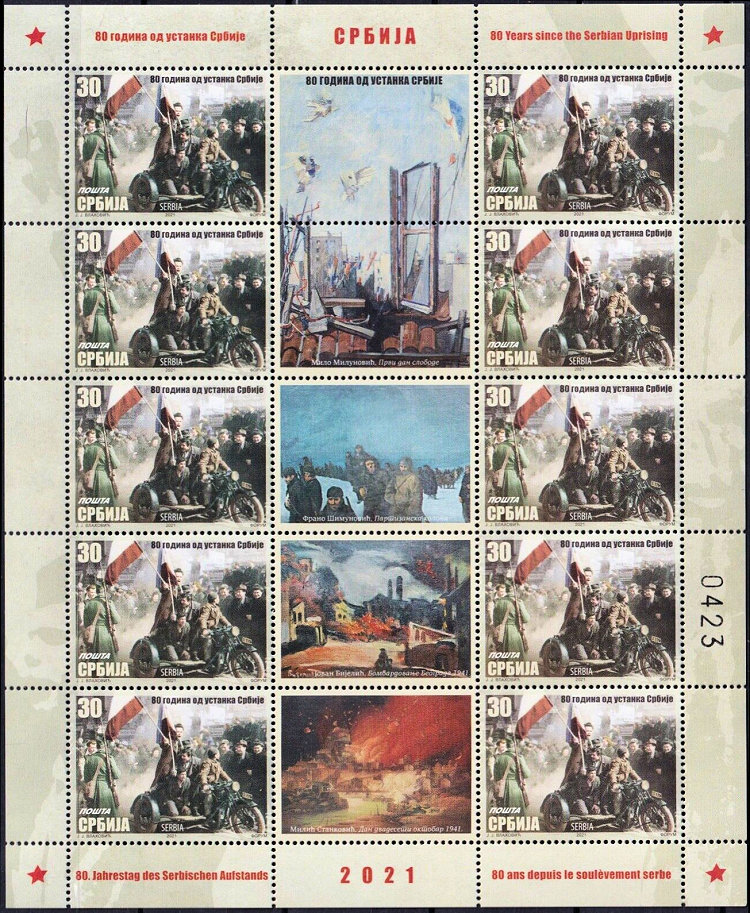
The 2 upper vignettes of the sheet show a painting by Milo Milunović, "The First Day of Freedom".
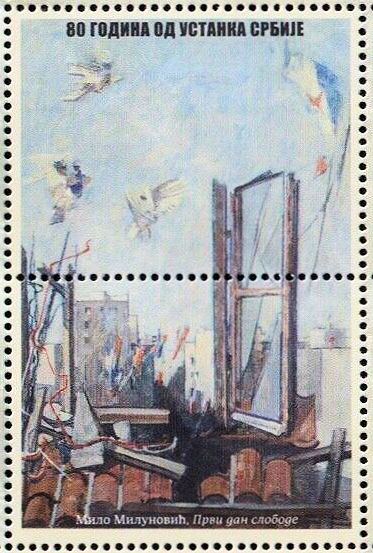
Below that a painting from Frano
Šimunović, "Column of the party".
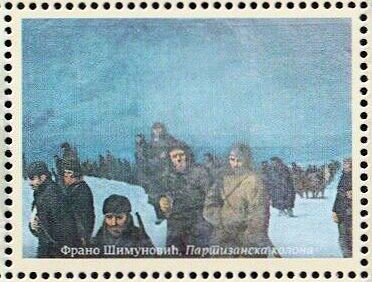
On the 4th vignette: Jovan Bijelić, "Bombardment on Belgrade 1941".
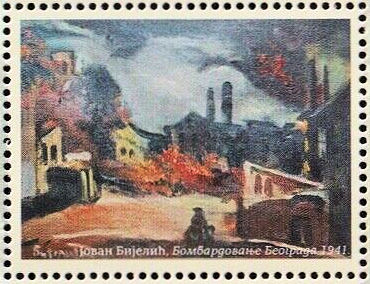
And on the lower vignette: Milić
Stanković, "20 October 1941".
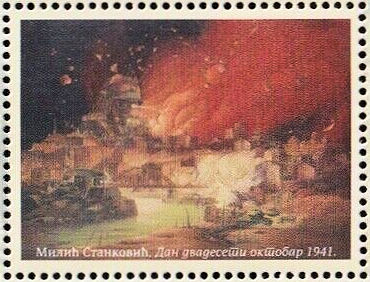
The FDC is illustrated with two partisans on protest posters, and in the background an image of the demonstrations in Belgrade on March 27 1941.
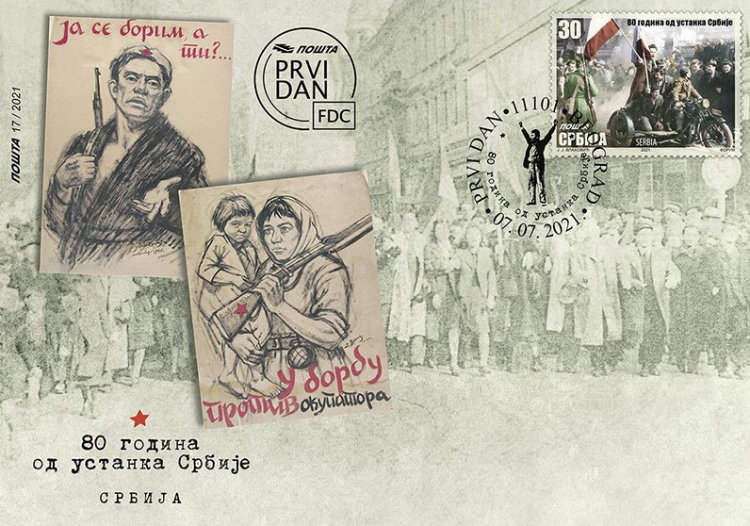
Then back to the Yugoslavian stamp. Regularly the question rises what the oft-discussed "torn flag stamp" actually is.
The stamp of the issue date March 27 1951 is printed in six counter sheets on one sheet of paper, and after that divided into sheets of sixteen stamps, which are then manually perforated.
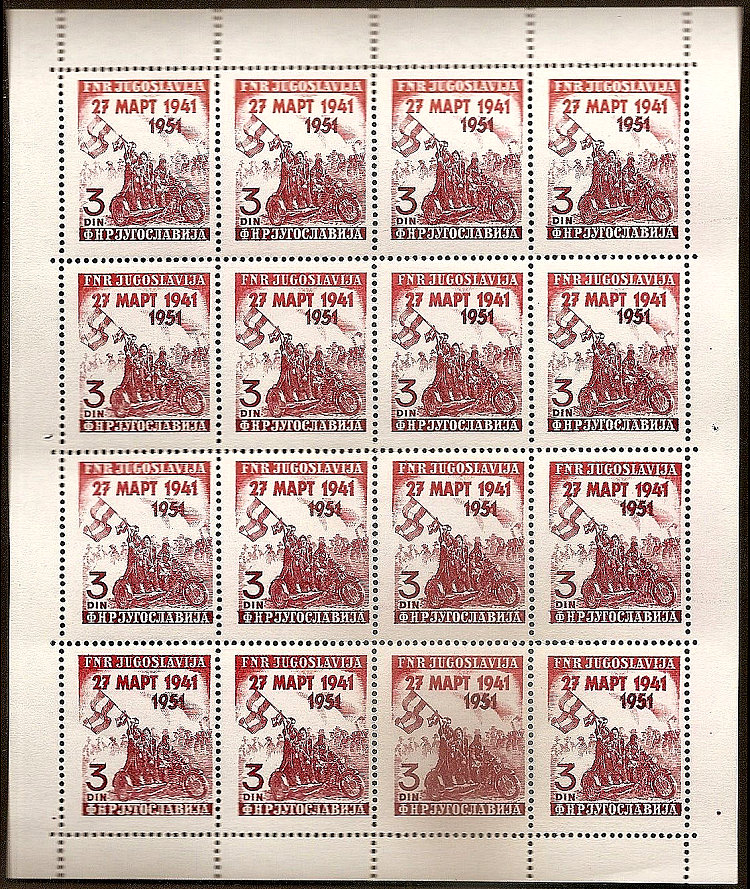
The image was applied in two print runs, red-brown and red, one after the other. The paper is not always fed in correctly, and this gives different distances between the two colours.
The stamps show a multitude of anomalies, such as stripes and dots, but the best known is that of a "torn flag". Probably there was some damage on the cliché in question. Well, here's an image of such a stamp.
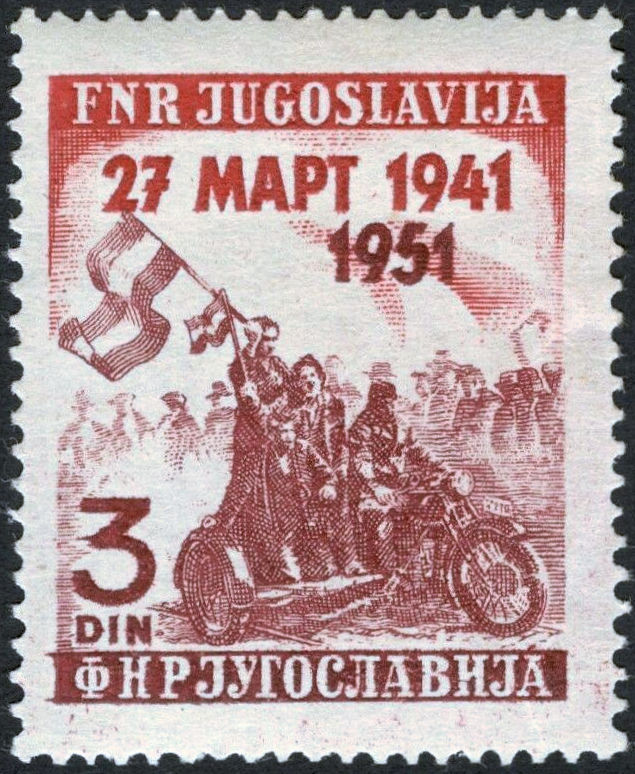
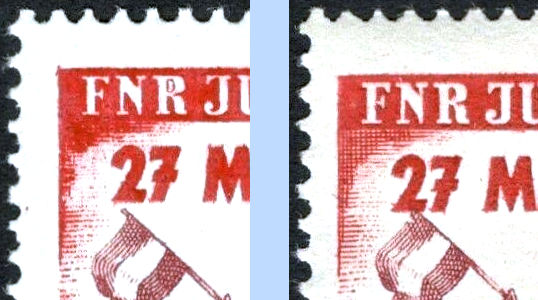
Left a fragment of a normal stamp, on the right with the torn flag (below the 2)
As far as I can tell, there is one in 96 stamps with this deviation.
Striking: The image with the tear in the flag was also used on the commemorative envelope on the occasion of the 25th anniversary of the coup.
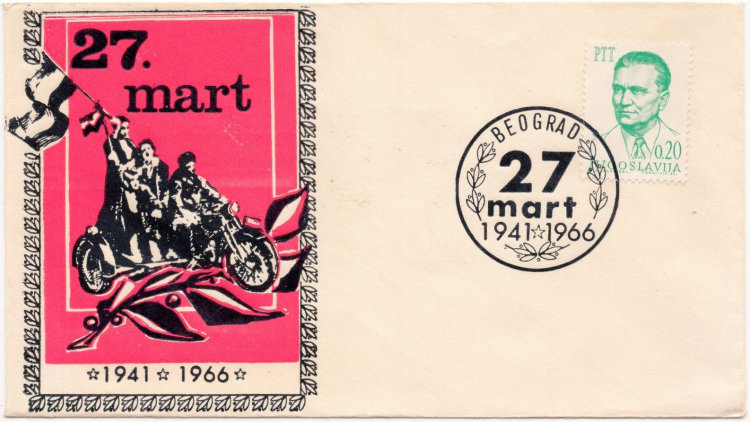
The stamp also found its place on the special envelope issued for the stamp exhibition of the Philatelists of Zemun. Zemun was a city, but today it is a district of Belgrade.
On the left the bust of Tito with war equipment, with the text next to his head: "Day of the Army" (Dag Armee) December 22 1941-1951.
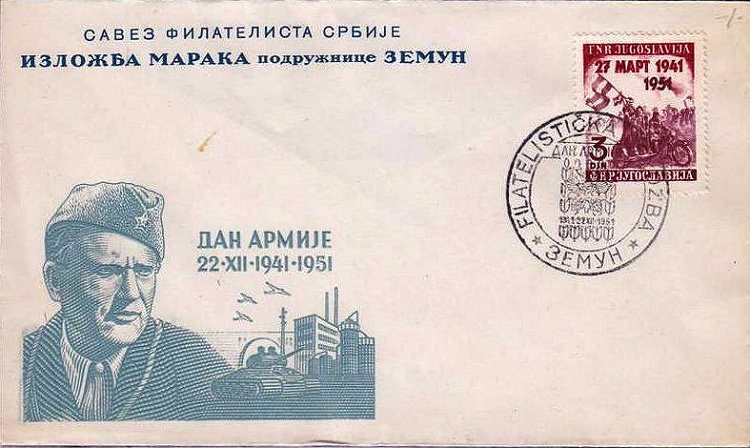
There is also a nice maximum card, made for the same occasion.
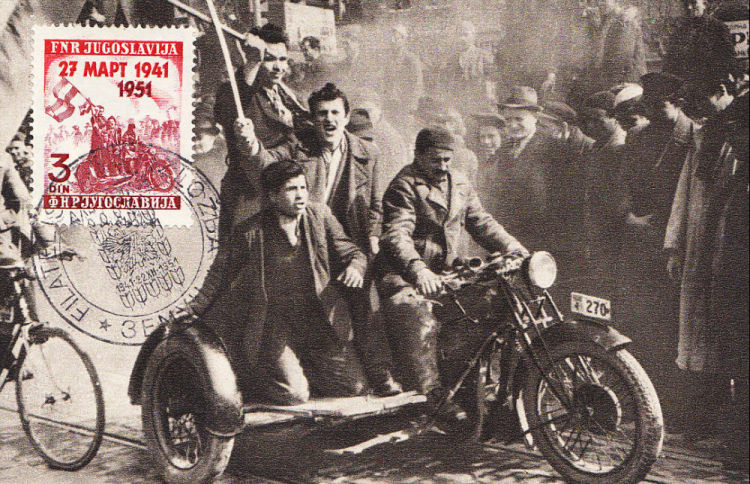
Hans de Kloet
Top - Back to former page - Home |











